Sample-Aware Data Augmentor for Scene Text Recognition
Guanghao Meng,
Tao Dai,
Shudeng Wu,
Bin Chen,
Jian Lu,
Yong Jiang,
Shutao Xia
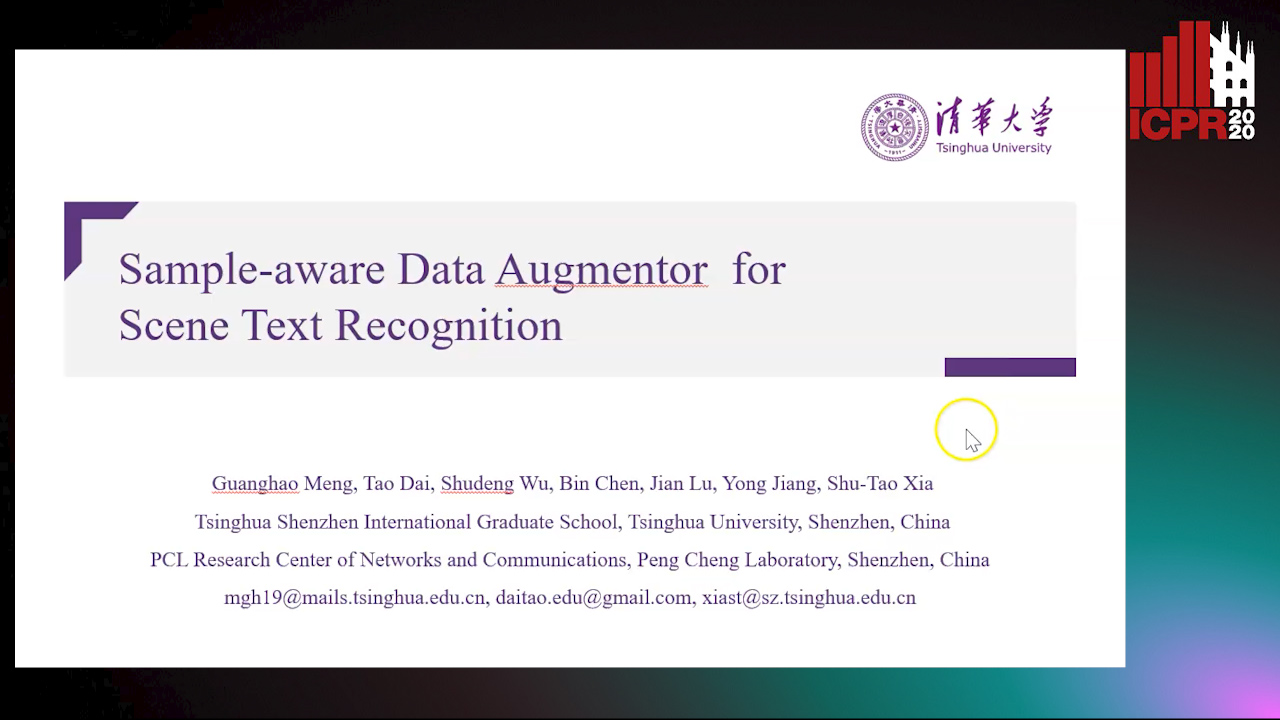
Auto-TLDR; Sample-Aware Data Augmentation for Scene Text Recognition
Similar papers
IBN-STR: A Robust Text Recognizer for Irregular Text in Natural Scenes
Xiaoqian Li, Jie Liu, Shuwu Zhang

Auto-TLDR; IBN-STR: A Robust Text Recognition System Based on Data and Feature Representation
ReADS: A Rectified Attentional Double Supervised Network for Scene Text Recognition
Qi Song, Qianyi Jiang, Xiaolin Wei, Nan Li, Rui Zhang

Auto-TLDR; ReADS: Rectified Attentional Double Supervised Network for General Scene Text Recognition
Abstract Slides Poster Similar
A Multi-Head Self-Relation Network for Scene Text Recognition
Zhou Junwei, Hongchao Gao, Jiao Dai, Dongqin Liu, Jizhong Han

Auto-TLDR; Multi-head Self-relation Network for Scene Text Recognition
Abstract Slides Poster Similar
Weakly Supervised Attention Rectification for Scene Text Recognition
Chengyu Gu, Shilin Wang, Yiwei Zhu, Zheng Huang, Kai Chen

Auto-TLDR; An auxiliary supervision branch for attention-based scene text recognition
Abstract Slides Poster Similar
2D License Plate Recognition based on Automatic Perspective Rectification
Hui Xu, Zhao-Hong Guo, Da-Han Wang, Xiang-Dong Zhou, Yu Shi

Auto-TLDR; Perspective Rectification Network for License Plate Recognition
Abstract Slides Poster Similar
Gaussian Constrained Attention Network for Scene Text Recognition
Zhi Qiao, Xugong Qin, Yu Zhou, Fei Yang, Weiping Wang
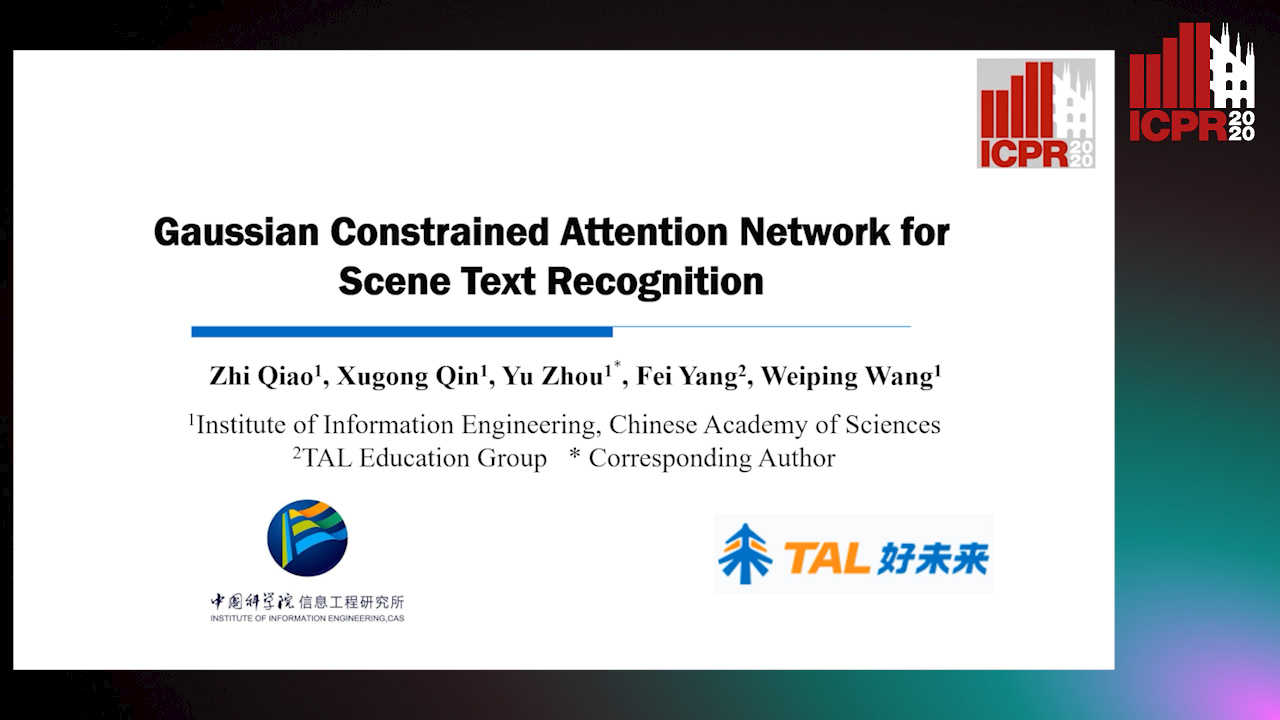
Auto-TLDR; Gaussian Constrained Attention Network for Scene Text Recognition
Abstract Slides Poster Similar
Cost-Effective Adversarial Attacks against Scene Text Recognition
Mingkun Yang, Haitian Zheng, Xiang Bai, Jiebo Luo

Auto-TLDR; Adversarial Attacks on Scene Text Recognition
Abstract Slides Poster Similar
Text Recognition in Real Scenarios with a Few Labeled Samples
Jinghuang Lin, Cheng Zhanzhan, Fan Bai, Yi Niu, Shiliang Pu, Shuigeng Zhou

Auto-TLDR; Few-shot Adversarial Sequence Domain Adaptation for Scene Text Recognition
Abstract Slides Poster Similar
MEAN: A Multi-Element Attention Based Network for Scene Text Recognition
Ruijie Yan, Liangrui Peng, Shanyu Xiao, Gang Yao, Jaesik Min

Auto-TLDR; Multi-element Attention Network for Scene Text Recognition
Abstract Slides Poster Similar
Recognizing Multiple Text Sequences from an Image by Pure End-To-End Learning
Zhenlong Xu, Shuigeng Zhou, Fan Bai, Cheng Zhanzhan, Yi Niu, Shiliang Pu
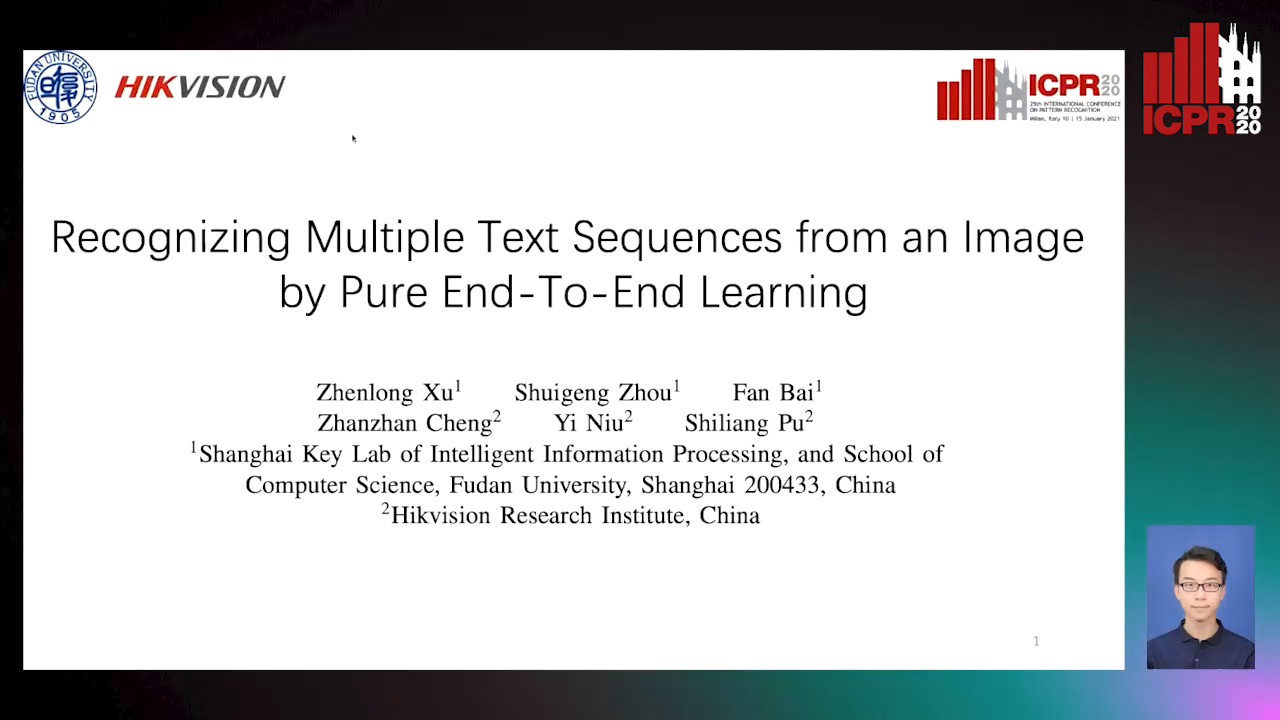
Auto-TLDR; Pure End-to-End Learning for Multiple Text Sequences Recognition from Images
Abstract Slides Poster Similar
Robust Lexicon-Free Confidence Prediction for Text Recognition
Qi Song, Qianyi Jiang, Rui Zhang, Xiaolin Wei

Auto-TLDR; Confidence Measurement for Optical Character Recognition using Single-Input Multi-Output Network
Abstract Slides Poster Similar
Text Recognition - Real World Data and Where to Find Them
Klára Janoušková, Lluis Gomez, Dimosthenis Karatzas, Jiri Matas

Auto-TLDR; Exploiting Weakly Annotated Images for Text Extraction
Abstract Slides Poster Similar
Transferable Adversarial Attacks for Deep Scene Text Detection
Shudeng Wu, Tao Dai, Guanghao Meng, Bin Chen, Jian Lu, Shutao Xia

Auto-TLDR; Robustness of DNN-based STD methods against Adversarial Attacks
Feature Embedding Based Text Instance Grouping for Largely Spaced and Occluded Text Detection
Pan Gao, Qi Wan, Renwu Gao, Linlin Shen

Auto-TLDR; Text Instance Embedding Based Feature Embeddings for Multiple Text Instance Grouping
Abstract Slides Poster Similar
An Accurate Threshold Insensitive Kernel Detector for Arbitrary Shaped Text
Xijun Qian, Yifan Liu, Yu-Bin Yang

Auto-TLDR; TIKD: threshold insensitive kernel detector for arbitrary shaped text
Stratified Multi-Task Learning for Robust Spotting of Scene Texts
Kinjal Dasgupta, Sudip Das, Ujjwal Bhattacharya

Auto-TLDR; Feature Representation Block for Multi-task Learning of Scene Text
Scene Text Detection with Selected Anchors
Anna Zhu, Hang Du, Shengwu Xiong

Auto-TLDR; AS-RPN: Anchor Selection-based Region Proposal Network for Scene Text Detection
Abstract Slides Poster Similar
A Transformer-Based Radical Analysis Network for Chinese Character Recognition
Chen Yang, Qing Wang, Jun Du, Jianshu Zhang, Changjie Wu, Jiaming Wang
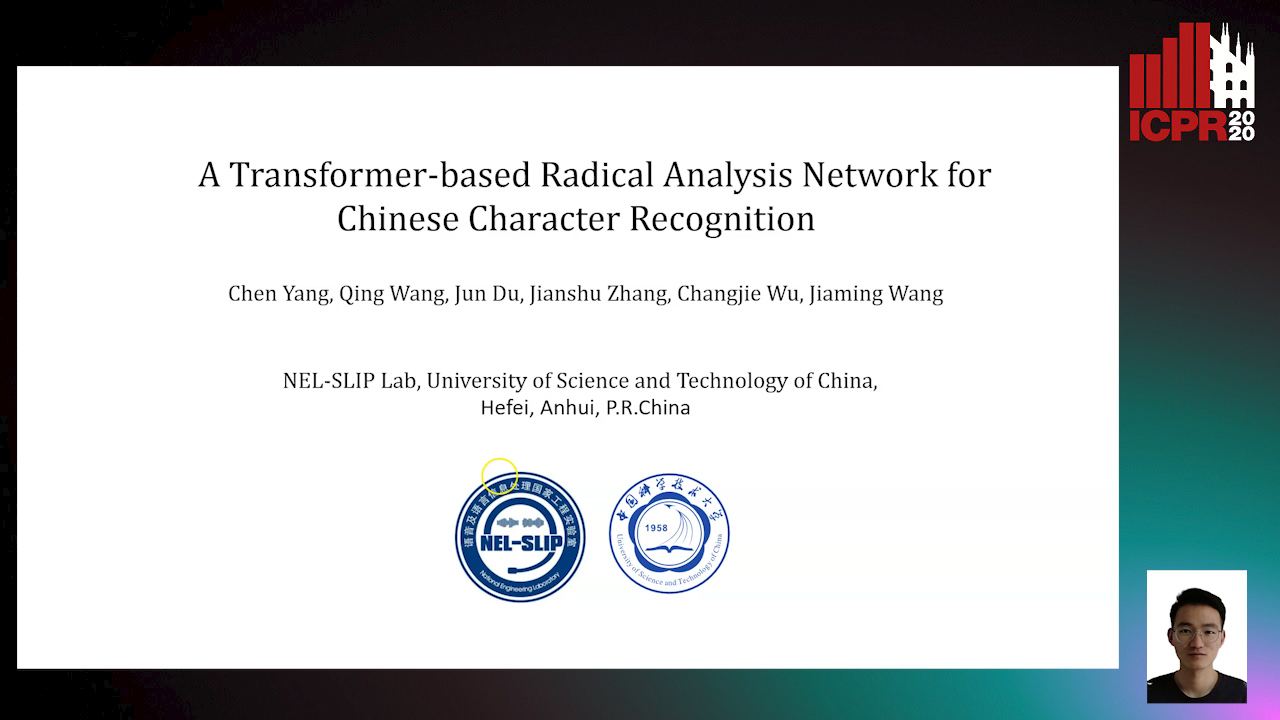
Auto-TLDR; Transformer-based Radical Analysis Network for Chinese Character Recognition
Abstract Slides Poster Similar
Cross-Lingual Text Image Recognition Via Multi-Task Sequence to Sequence Learning
Zhuo Chen, Fei Yin, Xu-Yao Zhang, Qing Yang, Cheng-Lin Liu

Auto-TLDR; Cross-Lingual Text Image Recognition with Multi-task Learning
Abstract Slides Poster Similar
Self-Training for Domain Adaptive Scene Text Detection
Yudi Chen, Wei Wang, Yu Zhou, Fei Yang, Dongbao Yang, Weiping Wang

Auto-TLDR; A self-training framework for image-based scene text detection
Local Gradient Difference Based Mass Features for Classification of 2D-3D Natural Scene Text Images
Lokesh Nandanwar, Shivakumara Palaiahnakote, Raghavendra Ramachandra, Tong Lu, Umapada Pal, Daniel Lopresti, Nor Badrul Anuar
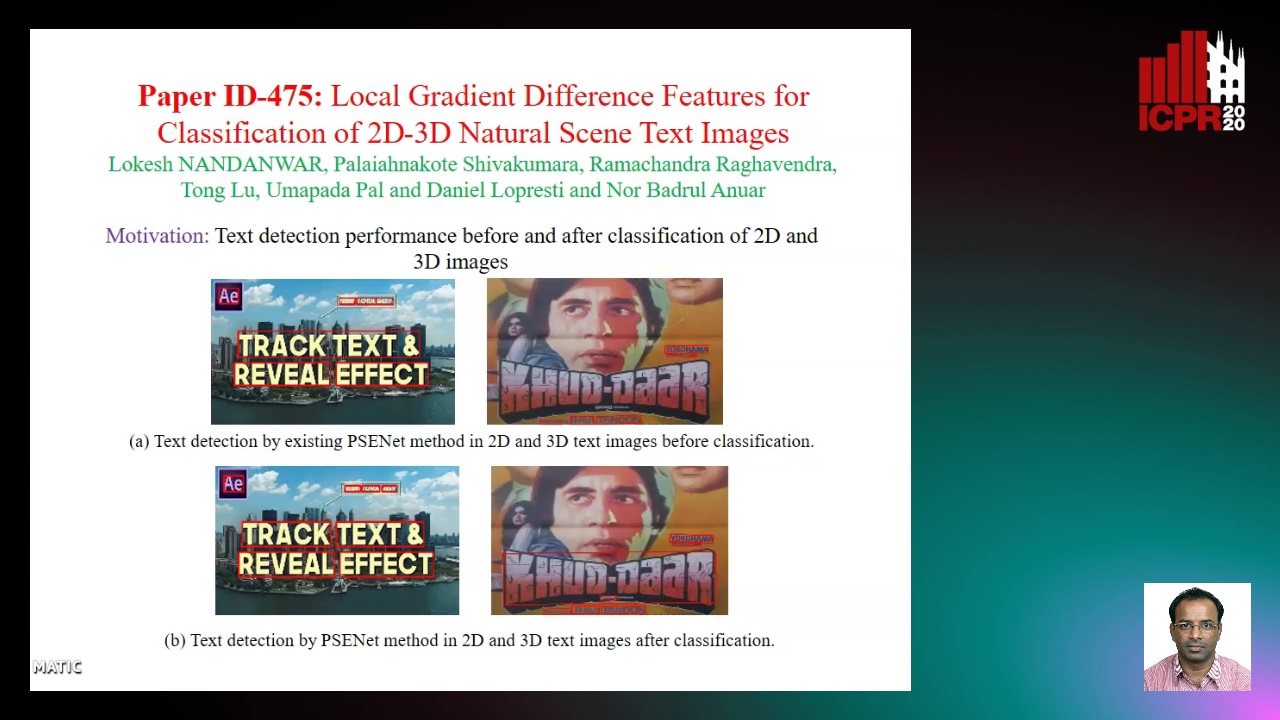
Auto-TLDR; Classification of 2D and 3D Natural Scene Images Using COLD
Abstract Slides Poster Similar
Global Context-Based Network with Transformer for Image2latex
Nuo Pang, Chun Yang, Xiaobin Zhu, Jixuan Li, Xu-Cheng Yin

Auto-TLDR; Image2latex with Global Context block and Transformer
Abstract Slides Poster Similar
Watch Your Strokes: Improving Handwritten Text Recognition with Deformable Convolutions
Iulian Cojocaru, Silvia Cascianelli, Lorenzo Baraldi, Massimiliano Corsini, Rita Cucchiara

Auto-TLDR; Deformable Convolutional Neural Networks for Handwritten Text Recognition
Abstract Slides Poster Similar
Dual Path Multi-Modal High-Order Features for Textual Content Based Visual Question Answering
Yanan Li, Yuetan Lin, Hongrui Zhao, Donghui Wang

Auto-TLDR; TextVQA: An End-to-End Visual Question Answering Model for Text-Based VQA
Mutually Guided Dual-Task Network for Scene Text Detection
Mengbiao Zhao, Wei Feng, Fei Yin, Xu-Yao Zhang, Cheng-Lin Liu
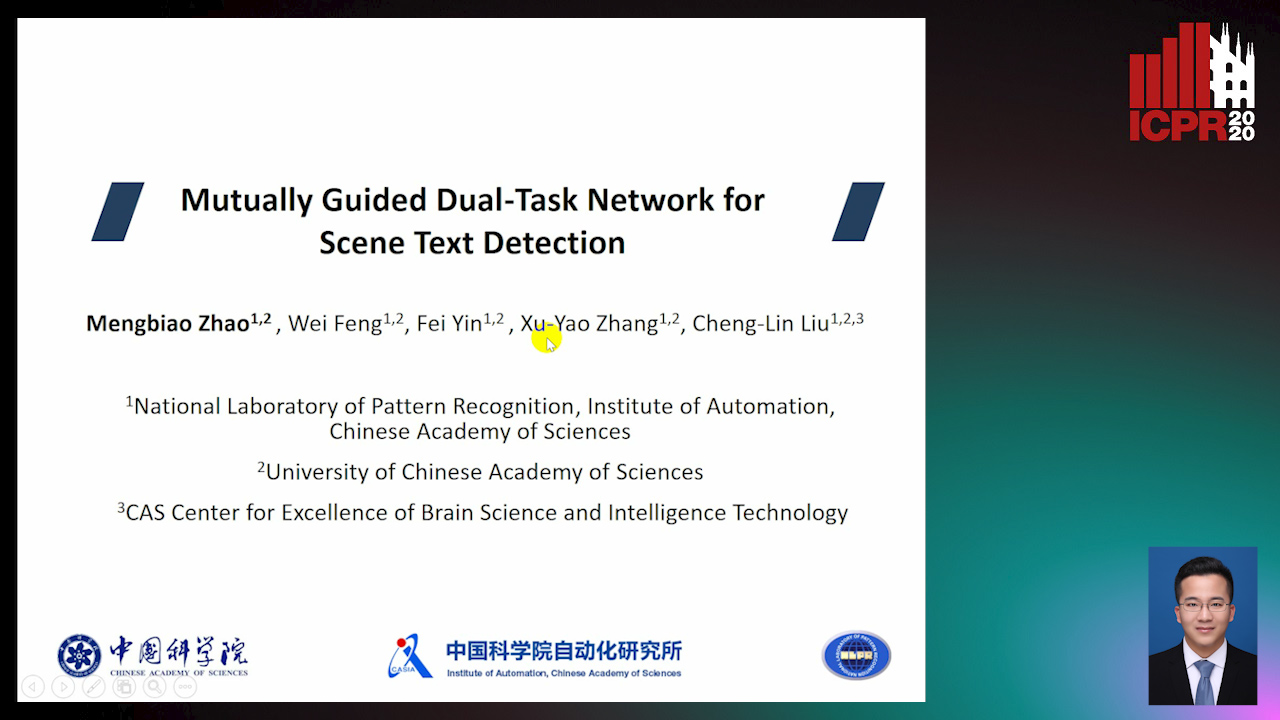
Auto-TLDR; A dual-task network for word-level and line-level text detection
Attentive Part-Aware Networks for Partial Person Re-Identification
Lijuan Huo, Chunfeng Song, Zhengyi Liu, Zhaoxiang Zhang

Auto-TLDR; Part-Aware Learning for Partial Person Re-identification
Abstract Slides Poster Similar
Improving Word Recognition Using Multiple Hypotheses and Deep Embeddings
Siddhant Bansal, Praveen Krishnan, C. V. Jawahar

Auto-TLDR; EmbedNet: fuse recognition-based and recognition-free approaches for word recognition using learning-based methods
Abstract Slides Poster Similar
DUET: Detection Utilizing Enhancement for Text in Scanned or Captured Documents
Eun-Soo Jung, Hyeonggwan Son, Kyusam Oh, Yongkeun Yun, Soonhwan Kwon, Min Soo Kim
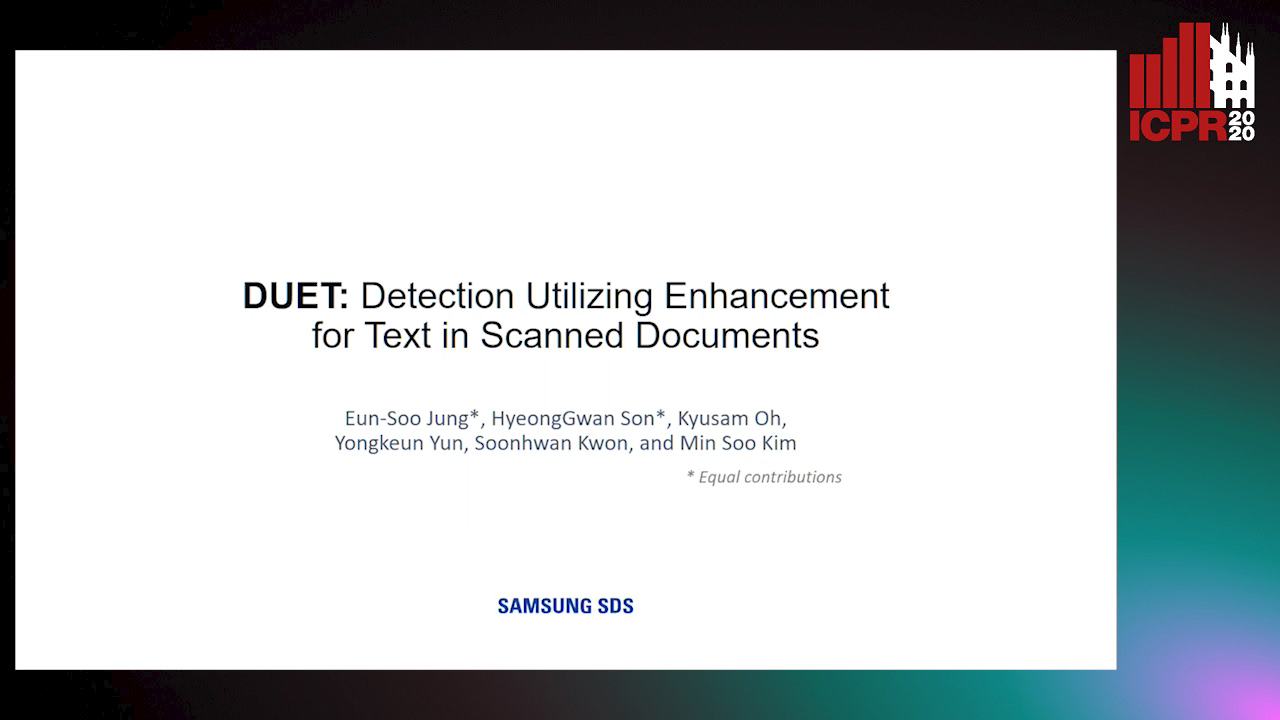
Auto-TLDR; Text Detection for Document Images Using Synthetic and Real Data
Abstract Slides Poster Similar
Position-Aware and Symmetry Enhanced GAN for Radial Distortion Correction
Yongjie Shi, Xin Tong, Jingsi Wen, He Zhao, Xianghua Ying, Jinshi Hongbin Zha

Auto-TLDR; Generative Adversarial Network for Radial Distorted Image Correction
Abstract Slides Poster Similar
LODENet: A Holistic Approach to Offline Handwritten Chinese and Japanese Text Line Recognition
Huu Tin Hoang, Chun-Jen Peng, Hung Tran, Hung Le, Huy Hoang Nguyen
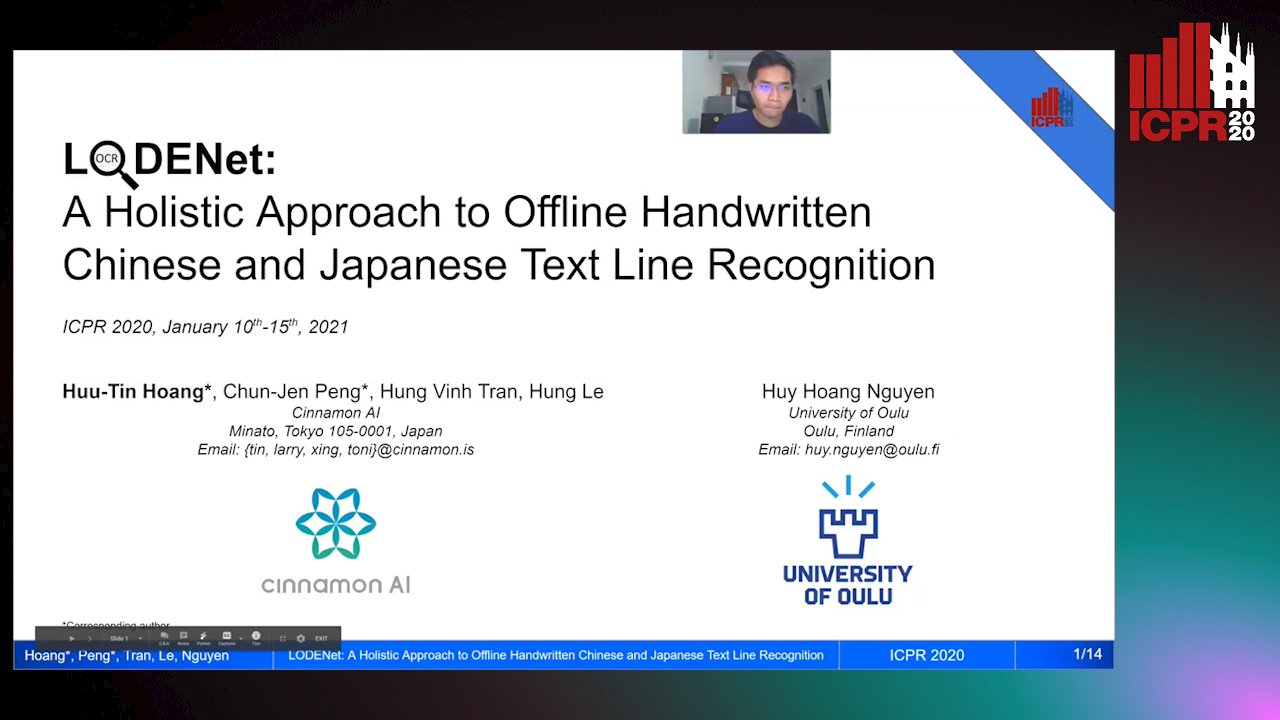
Auto-TLDR; Logographic DEComposition Encoding for Chinese and Japanese Text Line Recognition
Abstract Slides Poster Similar
Radical Counter Network for Robust Chinese Character Recognition
Yunqing Li, Yixing Zhu, Jun Du, Changjie Wu, Jianshu Zhang
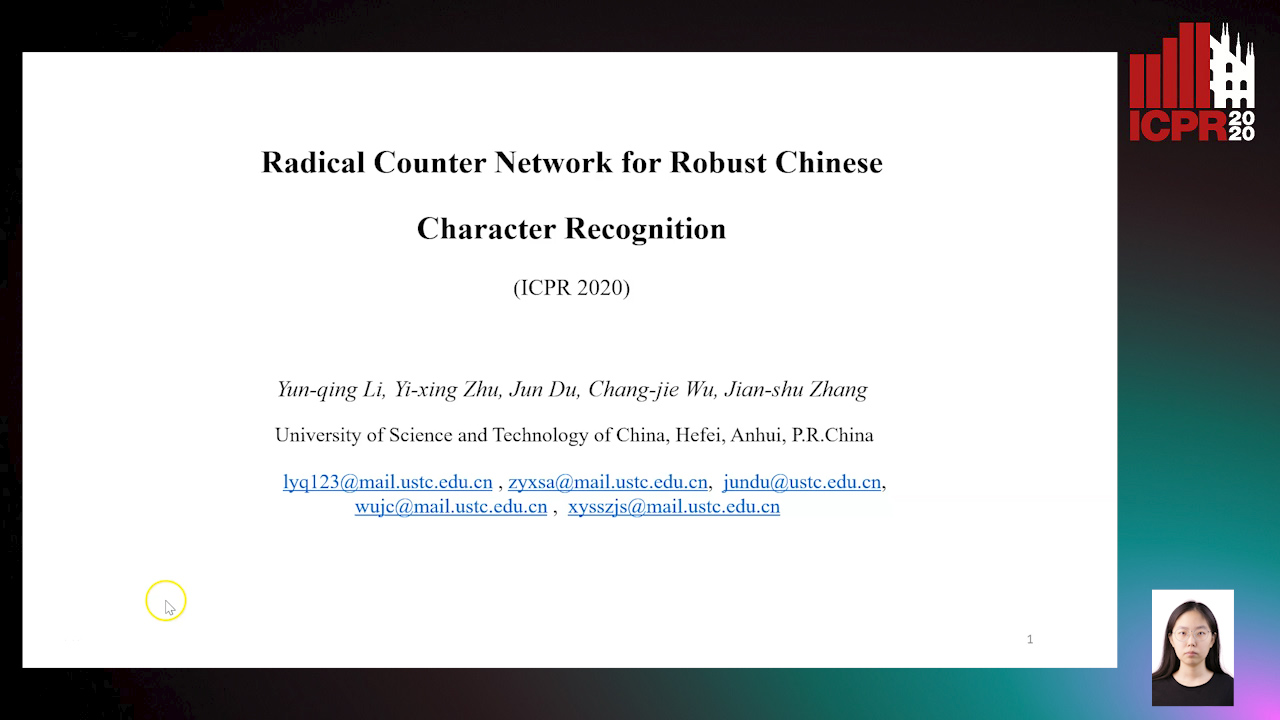
Auto-TLDR; Radical Counter Network for Chinese Character Recognition
Abstract Slides Poster Similar
ID Documents Matching and Localization with Multi-Hypothesis Constraints
Guillaume Chiron, Nabil Ghanmi, Ahmad Montaser Awal

Auto-TLDR; Identity Document Localization in the Wild Using Multi-hypothesis Exploration
Abstract Slides Poster Similar
ConvMath : A Convolutional Sequence Network for Mathematical Expression Recognition
Zuoyu Yan, Xiaode Zhang, Liangcai Gao, Ke Yuan, Zhi Tang

Auto-TLDR; Convolutional Sequence Modeling for Mathematical Expressions Recognition
Abstract Slides Poster Similar
RLST: A Reinforcement Learning Approach to Scene Text Detection Refinement
Xuan Peng, Zheng Huang, Kai Chen, Jie Guo, Weidong Qiu

Auto-TLDR; Saccadic Eye Movements and Peripheral Vision for Scene Text Detection using Reinforcement Learning
Abstract Slides Poster Similar
Multi-Task Learning Based Traditional Mongolian Words Recognition
Hongxi Wei, Hui Zhang, Jing Zhang, Kexin Liu

Auto-TLDR; Multi-task Learning for Mongolian Words Recognition
Abstract Slides Poster Similar
TCATD: Text Contour Attention for Scene Text Detection
Ziling Hu, Wu Xingjiao, Jing Yang
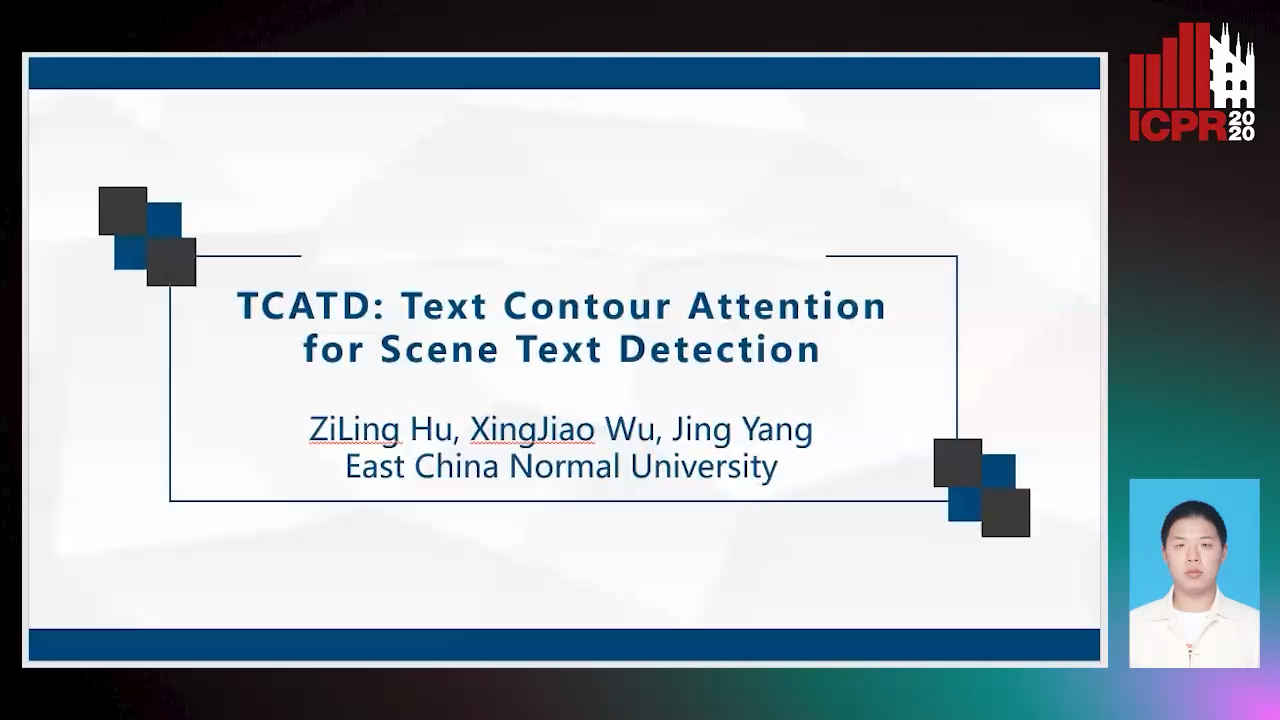
Auto-TLDR; Text Contour Attention Text Detector
Abstract Slides Poster Similar
Stroke Based Posterior Attention for Online Handwritten Mathematical Expression Recognition
Changjie Wu, Qing Wang, Jianshu Zhang, Jun Du, Jiaming Wang, Jiajia Wu, Jin-Shui Hu

Auto-TLDR; Posterior Attention for Online Handwritten Mathematical Expression Recognition
Abstract Slides Poster Similar
Boosting High-Level Vision with Joint Compression Artifacts Reduction and Super-Resolution
Xiaoyu Xiang, Qian Lin, Jan Allebach

Auto-TLDR; A Context-Aware Joint CAR and SR Neural Network for High-Resolution Text Recognition and Face Detection
Abstract Slides Poster Similar
PointDrop: Improving Object Detection from Sparse Point Clouds Via Adversarial Data Augmentation
Wenxin Ma, Jian Chen, Qing Du, Wei Jia
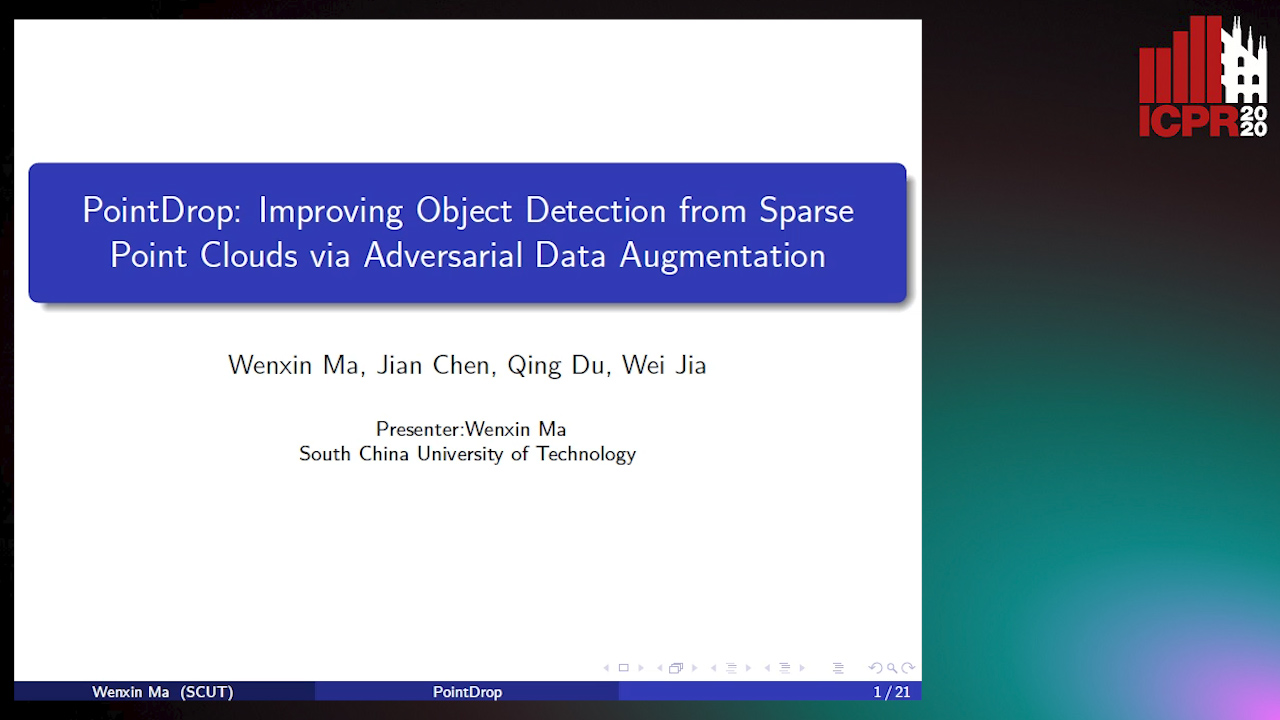
Auto-TLDR; PointDrop: Improving Robust 3D Object Detection to Sparse Point Clouds
Abstract Slides Poster Similar
On-Device Text Image Super Resolution
Dhruval Jain, Arun Prabhu, Gopi Ramena, Manoj Goyal, Debi Mohanty, Naresh Purre, Sukumar Moharana

Auto-TLDR; A Novel Deep Neural Network for Super-Resolution on Low Resolution Text Images
Abstract Slides Poster Similar
A Gated and Bifurcated Stacked U-Net Module for Document Image Dewarping
Hmrishav Bandyopadhyay, Tanmoy Dasgupta, Nibaran Das, Mita Nasipuri
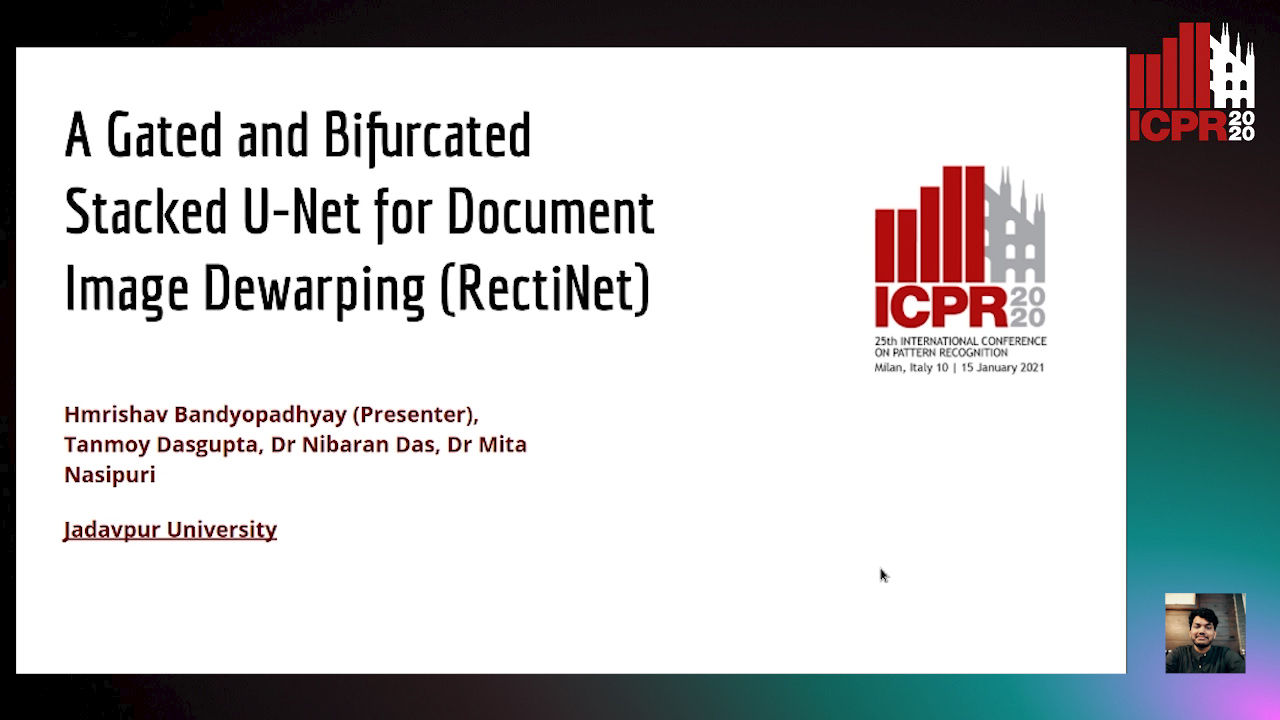
Auto-TLDR; Gated and Bifurcated Stacked U-Net for Dewarping Document Images
Abstract Slides Poster Similar
Pose Variation Adaptation for Person Re-Identification
Lei Zhang, Na Jiang, Qishuai Diao, Yue Xu, Zhong Zhou, Wei Wu

Auto-TLDR; Pose Transfer Generative Adversarial Network for Person Re-identification
Abstract Slides Poster Similar
PICK: Processing Key Information Extraction from Documents Using Improved Graph Learning-Convolutional Networks
Wenwen Yu, Ning Lu, Xianbiao Qi, Ping Gong, Rong Xiao

Auto-TLDR; PICK: A Graph Learning Framework for Key Information Extraction from Documents
Abstract Slides Poster Similar
A Multi-Task Neural Network for Action Recognition with 3D Key-Points
Rongxiao Tang, Wang Luyang, Zhenhua Guo

Auto-TLDR; Multi-task Neural Network for Action Recognition and 3D Human Pose Estimation
Abstract Slides Poster Similar
Fast Approximate Modelling of the Next Combination Result for Stopping the Text Recognition in a Video
Konstantin Bulatov, Nadezhda Fedotova, Vladimir V. Arlazarov
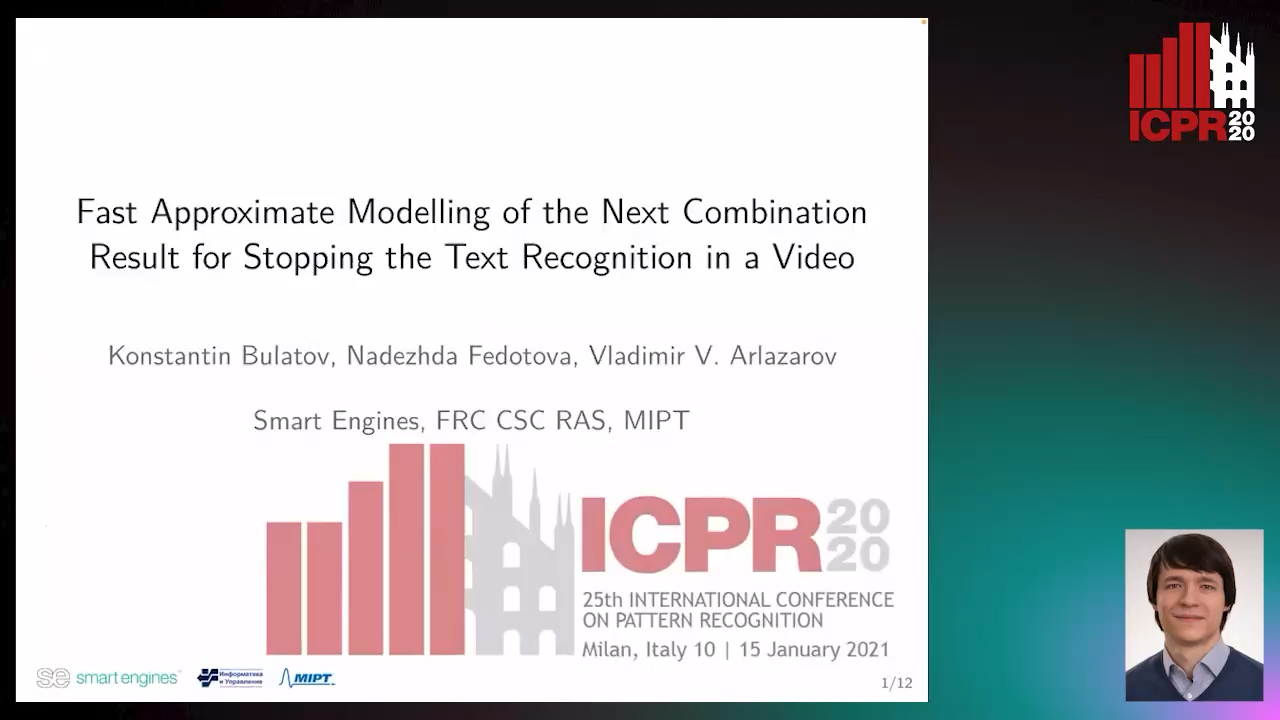
Auto-TLDR; Stopping Video Stream Recognition of a Text Field Using Optimized Computation Scheme
Abstract Slides Poster Similar
Deep Space Probing for Point Cloud Analysis
Yirong Yang, Bin Fan, Yongcheng Liu, Hua Lin, Jiyong Zhang, Xin Liu, 蔡鑫宇 蔡鑫宇, Shiming Xiang, Chunhong Pan

Auto-TLDR; SPCNN: Space Probing Convolutional Neural Network for Point Cloud Analysis
Abstract Slides Poster Similar
DmifNet:3D Shape Reconstruction Based on Dynamic Multi-Branch Information Fusion
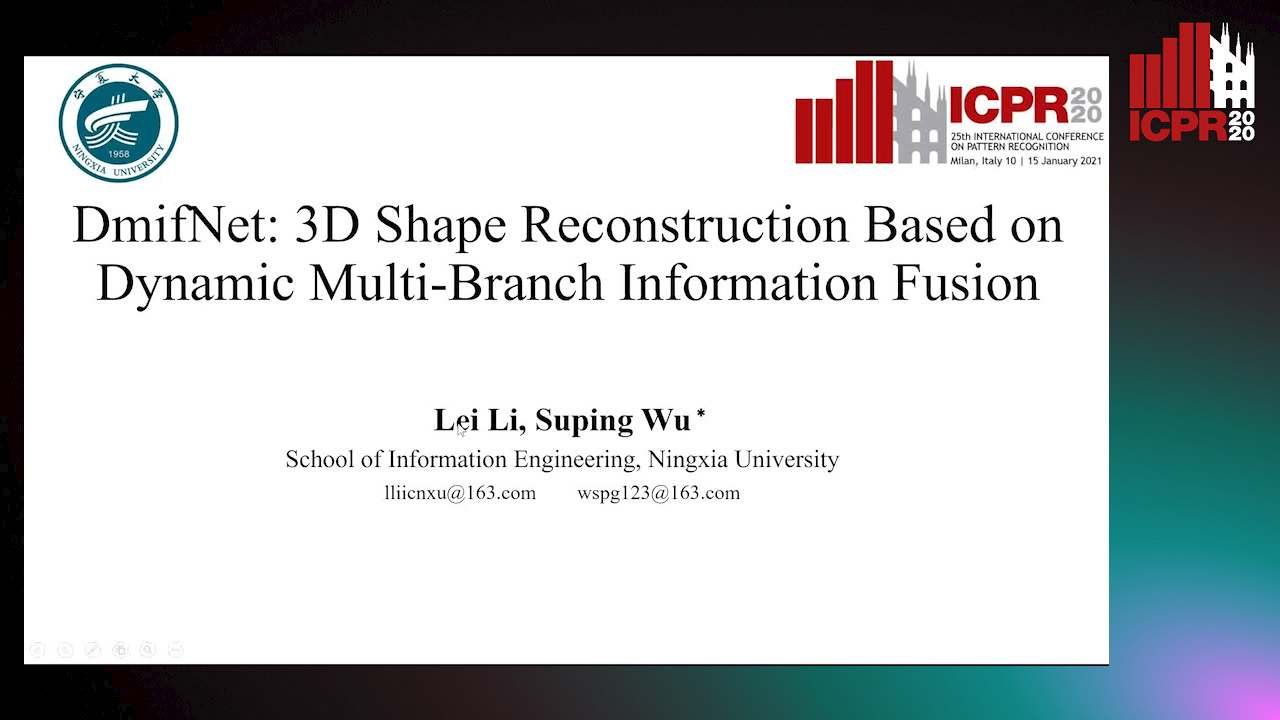
Auto-TLDR; DmifNet: Dynamic Multi-branch Information Fusion Network for 3D Shape Reconstruction from a Single-View Image
Boundary-Aware Graph Convolution for Semantic Segmentation
Hanzhe Hu, Jinshi Cui, Jinshi Hongbin Zha

Auto-TLDR; Boundary-Aware Graph Convolution for Semantic Segmentation
Abstract Slides Poster Similar